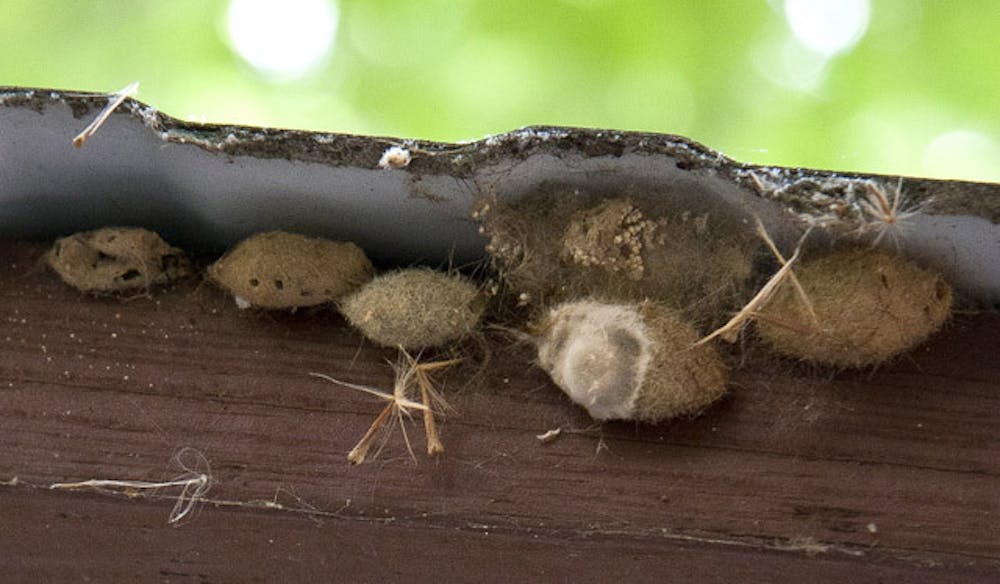Fuzzy, tan cocoons might not look as threatening as hordes of crimson-headed caterpillars, but touching them can still cause students and area residents to have allergic reactions.
Contact with the tussock moth caterpillar’s black and white hairs can cause localized swelling and itching. The caterpillar population this year is especially large.
People should also be careful with the cocoons.
The caterpillars’ hair gets trapped in them, making them equally allergenic, said Eileen Buss, an associate professor and extension specialist with UF’s Entomology and Nematology Department.
This is the largest population since 2001, she said, but Buss didn’t know the numbers.
She said population size is cyclical, but the warm weather might also be partly responsible.
Ambrose Coulliette, a 24-year-old electrical engineering senior, said he saw caterpillars raining from trees when he walked from the bus to Hidden Village Apartments.
“There’s a whole s—t-ton of them between Archer and Old Archer,” he said.
Buss recommended pressing packaging tape against skin irritated by the hair.
Pulling the tape off will remove the tiny hairs, she said, but prescription-strength cream might be necessary to alleviate symptoms.
She also recommended people throw away cocoons instead of spraying them with chemicals to reduce next year’s population.
Tussock moth cocoons, like those clustered under a pavilion at Maguire Village, can be found under park benches, signs and other crannies. Allergenic caterpillar hair, which may cause a rash on some people, might be trapped in the cocoons, said Eileen Buss, an associate professor and extension specialist with UF’s Department of Entomology and Nematology.






